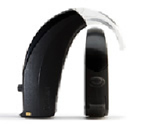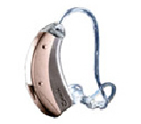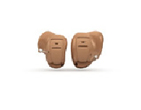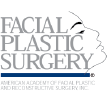Office hours
Monday-Friday 8a.m. - 5p.m.
Phone
p 309.664.3440
Address map
1765 Bradford Lane
Normal, IL 61761
Hearing Aids
Hearing aids are the primary means of managing hearing loss that cannot be treated medically or surgically. Our audiologist will conduct a comprehensive hearing evaluation to determine whether or not you are a candidate for hearing aids. Based on your evaluation, the audiologist may recommend hearing aids or make a referral to an ear, nose and throat physician to investigate medical or surgical options.
Hearing aids are similar to a miniature public address system. The microphone picks up the sound, the amplifier makes the sound louder, and the receiver (speaker) delivers the sound. In 2009, 98 percent of all hearing aids are digital. Digital technology allows advantageous manipulation of sound in many useful ways. Some hearing aids are completely automatic, while others have user-adjustable controls. Your audiologist will work with you to review hearing aid options. The two of you will select the best configuration for your particular needs. All hearing aids are powered by a battery.
Types of Hearing Aids
Hearing aid styles may be broadly classified as “standard” and “custom.” Standard hearing aids include behind-the-ear (BTE), mini-BTE, and receiver-in-the-canal (RIC) devices. These products are designed to fit most ears and usually require some customization of the earpiece and the connection of the device to the earpiece. Custom hearing aids include in-the-ear (ITE), in-the-canal (ITC), and completely-in-the-canal (CIC). These products require a custom-molded shell that houses the electronics. Standard and custom hearing aids come in a variety of colors, shapes, and sizes. The choice of hearing aid styles and features is based on several factors including the exact type and degree of hearing loss, your individual needs (such as communication requirements, lifestyle, and manual dexterity), and your medical and audiological history and related findings.
One or Two Hearing Aids
If both ears need amplification, your audiologist will recommend two hearing aids. Research has shown that two hearing aids provide superior benefits for the majority of people with regard to better word recognition in quiet and noisy backgrounds, better quality of sound, better localization ability, more natural hearing. Research has also shown that when both ears are candidates for hearing aids and only one ear is fitted, the unaided ear may lose speech recognition ability more rapidly than the fitted ear.
Features
Several features are available to improve the hearing aid experience. The most common are
- Directional microphones to enhance speech understanding in noise,
- Noise management to improve listening comfort in noisy situations,
- Feedback cancellation to alleviate the annoyance of whistling and buzzing, and
- Telephone programs to access sound from phones and other sound source
Fitting
After your hearing aids have been selected, they must be fitted appropriately. Hearing aids must amplify sounds so they can be heard comfortably without causing discomfort, and hearing aids must be secure and physically comfortable in the ear. The hearing aids are adjusted using a computer in the audiologist’s office, and the results can be measured. However, the audiologist’s office does not usually represent the variety of sounds heard in everyday life, and so your new hearing aids will need to be evaluated in the sound environments important to you; a daily journal is useful for this purpose. By working with your audiologist, the hearing aids can be adjusted to perform most functions optimally and automatically in these environments. Your audiologist will likely suggest specific hearing assistive technologies to supplement the hearing aids and to address specific complaints.
Maintenance and Insurance
Our audiologist will review with you the details of your insurance coverage (if available), financing options, loss, theft and damage insurance, warranty, service protocols, maintenance advice, as well as introductory periods and return policies.
As with all electronics, hearing aids require care and maintenance. This includes handling them carefully, not exposing the hearing aids to water and chemicals, and keeping them very clean. Your audiologist will discuss and demonstrate proper daily care as well as maintenance techniques and maintenance products. The hearing aid user’s manual will review many of these same points. Given the hostile conditions (temperature extremes, high levels of humidity, ear wax, etc.) under which hearing aids operate, daily cleaning and maintenance is recommended. Proper care and maintenance clearly reduces the need for repair.
Expectations and Outcomes
Even with the best technology, it is important to maintain realistic expectations. While hearing aids make sounds easier to hear, they will not restore normal hearing. Hearing aids re-introduce you to a world of sound, and it takes time to become accustomed to the new sounds. Some people adjust quickly, others take longer. Your audiologist will discuss auditory training programs, communication strategies, and hearing assistive technologies to alleviate difficulties in these situations.
Untreated hearing loss impairs memory and may cause difficulty related to learning new tasks. Untreated hearing loss may result in decreased job performance and has been shown to negatively impact wages and earnings. Hearing loss treated with hearing aids has been shown to decrease fatigue, irritability, risk to personal safety, and withdrawal from social situations. Further, in many research studies, hearing aid use has been shown to increase the wearer’s quality of life. (Source: American Academy of Audiology).
Types of Hearing Aids
 BTE - behind the ear
BTE - behind the ear
BTE hearing aids fit comfortably behind the ear and are attached to a custom earmold through a tube. They are suitable for all age groups. Because of their larger size, BTEs are very useful for patients with dexterity issues. These hearing aids can be quite effective and are also compatible with FM systems. BTEs are recommended for patients with mild to profound hearing loss.

Open Fit
These are small behind the ear hearing aids which use thin tubing with domes which are placed in the ear canal. The domes occupy only a portion of the ear canal and therefore allow for a more natural sound without feeling occluded. Open fit hearing aids are best suited for patients with mild to moderate high frequency hearing loss. In addition, these hearing aids are cosmetically appealing because of their smaller size.

ITC - In the canal
ITC hearing aids are more customized to suit individual patients and involve making an ear mold that completely fits the outer ear. Patients with moderately severe hearing loss can consider ITC hearing aids.

CIC - Completely in the canal
It is the least noticeable hearing aids due to their small size. They fit entirely in the ear canal and are highly recommended for patients concerned with the visual appeal of wearing a hearing aid. CICs allow easy use of phones. Due to the limited size of the instrument it is often limited in features and options. CICs are recommended for patients with moderately severe hearing loss.


